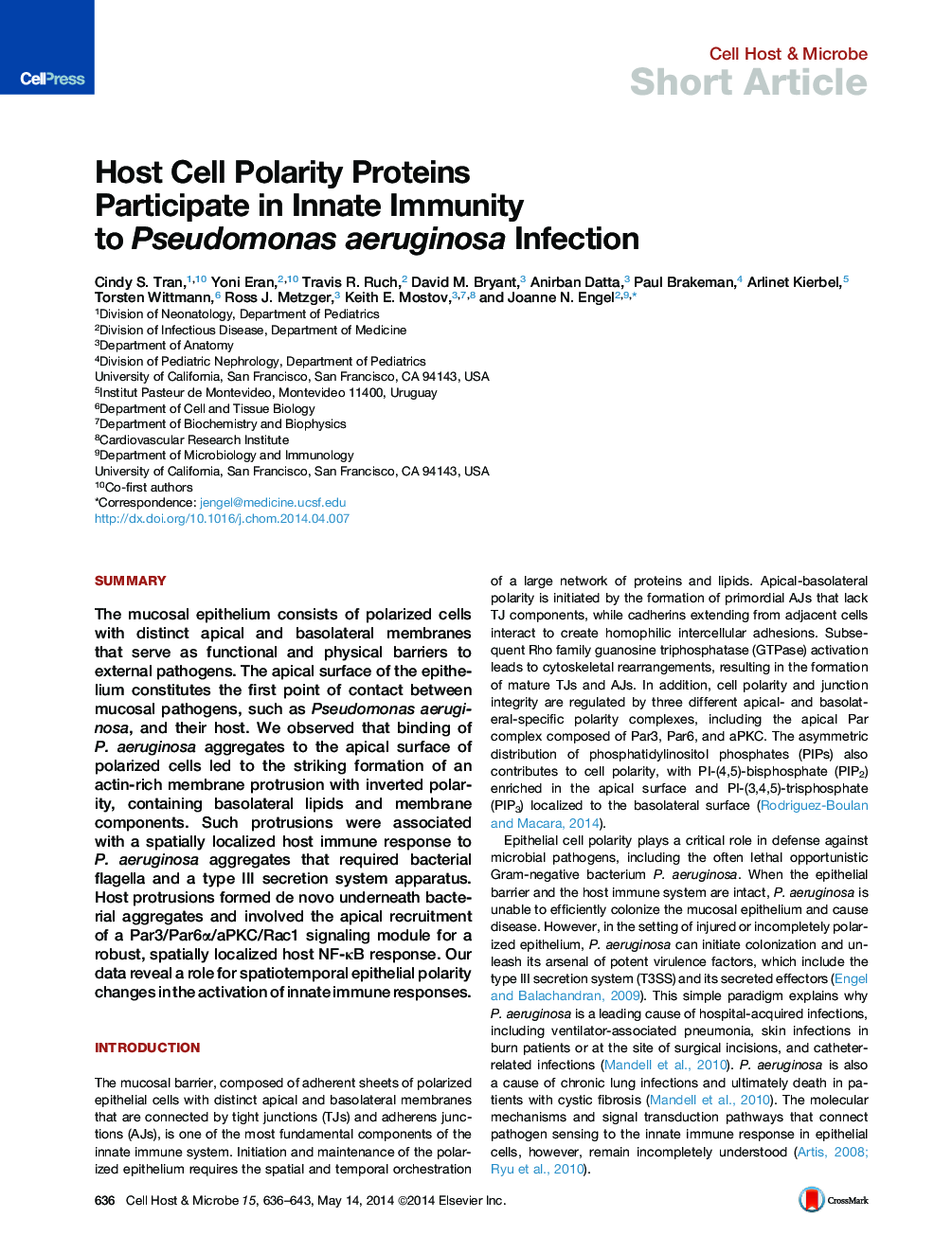| Article ID | Journal | Published Year | Pages | File Type |
|---|---|---|---|---|
| 4361001 | Cell Host & Microbe | 2014 | 8 Pages |
•Apical membrane protrusions are formed de novo in response to P. aeruginosa binding•Protrusion formation is required for localized activation of NF-κB•Protrusion formation and NF-κB activation both require Par3, Rac, and PI3K•Insertion of the T3SS translocon is important to initiate this immune response
SummaryThe mucosal epithelium consists of polarized cells with distinct apical and basolateral membranes that serve as functional and physical barriers to external pathogens. The apical surface of the epithelium constitutes the first point of contact between mucosal pathogens, such as Pseudomonas aeruginosa, and their host. We observed that binding of P. aeruginosa aggregates to the apical surface of polarized cells led to the striking formation of an actin-rich membrane protrusion with inverted polarity, containing basolateral lipids and membrane components. Such protrusions were associated with a spatially localized host immune response to P. aeruginosa aggregates that required bacterial flagella and a type III secretion system apparatus. Host protrusions formed de novo underneath bacterial aggregates and involved the apical recruitment of a Par3/Par6α/aPKC/Rac1 signaling module for a robust, spatially localized host NF-κB response. Our data reveal a role for spatiotemporal epithelial polarity changes in the activation of innate immune responses.
Graphical AbstractFigure optionsDownload full-size imageDownload high-quality image (329 K)Download as PowerPoint slide
